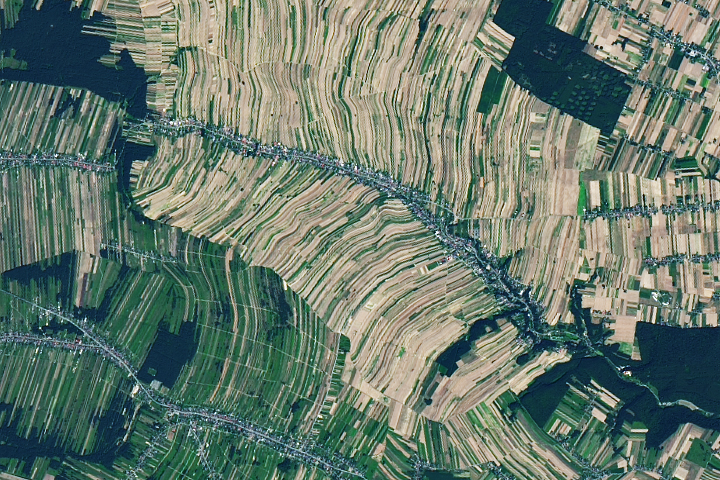🚀 Quick Summary
- NASA’s space-based technologies help farmers achieve sustainable agriculture.
- Satellites monitor soil health, water use, and crop conditions in real-time.
- NASA’s research supports precision farming, climate resilience, and food security.
- The integration of AI, remote sensing, and space tech makes farming more efficient and eco-friendly.
🌍 Why NASA is Involved in Agriculture
At first, NASA and farming might seem unrelated, but space technology plays a major role in helping farmers adapt to climate change and resource limitations.
🔹 What NASA Brings to Agriculture:
✅ Satellite Monitoring – Tracks soil moisture, crop health, and deforestation.
✅ Climate Research – Predicts droughts, floods, and seasonal weather changes.
✅ Water Management – Helps optimize irrigation and reduce waste.
✅ Precision Farming – Uses AI and remote sensing for targeted crop management.
By using space-based solutions, NASA helps ensure agriculture is sustainable, productive, and resilient.
🛰️ How NASA’s Satellites Support Farming
NASA operates Earth-observing satellites that provide farmers and policymakers with critical agricultural data.
🔭 Key NASA Satellites for Agriculture
🛰 Landsat Program – Tracks farmland health and deforestation trends.
🌊 SMAP (Soil Moisture Active Passive) – Monitors global soil moisture levels.
☀ MODIS (Moderate Resolution Imaging Spectroradiometer) – Observes vegetation health and climate impact.
💨 GRACE-FO (Gravity Recovery and Climate Experiment) – Measures underground water storage for irrigation planning.
These satellites help farmers maximize yields while reducing environmental harm.
🌱 How NASA Supports Precision Farming
Precision farming is one of the biggest agricultural revolutions, allowing farmers to use resources more efficiently. NASA supports precision agriculture by:
🚜 Using AI to analyze satellite data and detect plant diseases early.
🌍 Helping farmers reduce fertilizer and water waste with targeted insights.
🔬 Developing new crop monitoring tools for better decision-making.
These innovations allow farmers to grow more food using fewer resources—a key goal for sustainability.
🌎 Climate Change & Agriculture: NASA’s Role in Resilience
With rising temperatures, unpredictable weather, and soil degradation, NASA provides critical climate data to help farmers adapt.
✔ Early warning systems for droughts & floods to protect crops.
✔ Global temperature tracking for better seasonal planning.
✔ Carbon footprint monitoring to develop eco-friendly farming techniques.
NASA’s research helps reduce agriculture’s environmental impact while ensuring food security.
📊 Case Study: NASA’s Impact on Indian Farmers
India, with its large agricultural sector, has greatly benefited from NASA’s satellite data. The NASA-ISRO collaboration provides:
🌾 Improved monsoon predictions, helping farmers plan their planting cycles.
💦 Better irrigation management, reducing water waste.
🛰 Drought monitoring, ensuring early intervention in dry regions.
By integrating NASA’s Earth observation data, India has improved food security and farming efficiency.
🔍 Upcoming NASA Missions for Agriculture
🚀 NISAR (NASA-ISRO Synthetic Aperture Radar) Satellite – Mapping global farmland changes in real-time.
🌎 PACE (Plankton, Aerosol, Cloud, ocean Ecosystem) – Studying climate impact on agriculture.
🔬 Aqua & Terra Satellites – Monitoring crop growth and soil conditions globally.
These missions will further strengthen the role of space technology in sustainable farming.
🔍 FAQs: NASA’s Role in Agriculture
1. Why does NASA study agriculture?
NASA’s satellite technology helps farmers monitor crops, predict weather, and manage water resources more effectively.
2. How does space technology improve farming?
Satellites provide real-time data on soil, crops, and climate, allowing for more precise farming and resource conservation.
3. Can NASA’s research help prevent food shortages?
Yes! By monitoring global food production trends, NASA helps policymakers prevent shortages and improve food distribution.
4. What is NASA’s SMAP satellite, and why is it important?
SMAP tracks global soil moisture levels, which helps farmers predict droughts and optimize irrigation.
5. Will future NASA missions focus more on agriculture?
Yes! NASA is developing new AI-driven tools and satellites to further enhance agricultural sustainability.
📢 Join the Conversation!
🌱 How do you think space technology will shape the future of farming? Drop your thoughts in the comments!
📲 Share this post on Twitter, Facebook, or LinkedIn using #SustainableFarming #NASA #SpaceTechForAgriculture.
🔗 Related Posts:












0 comments:
Post a Comment